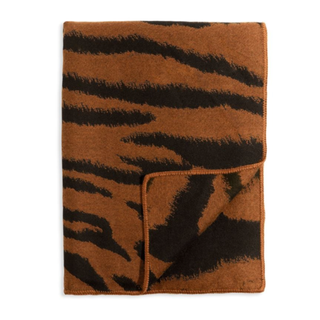Sorry Leopard Print, Tiger Is Now the Big Pattern Trend in Home Design for 2025
Leopard had its time, but tiger print — the loud luxury signal — is proving to have stronger claws. Shop the glamorous look we're after for 2025
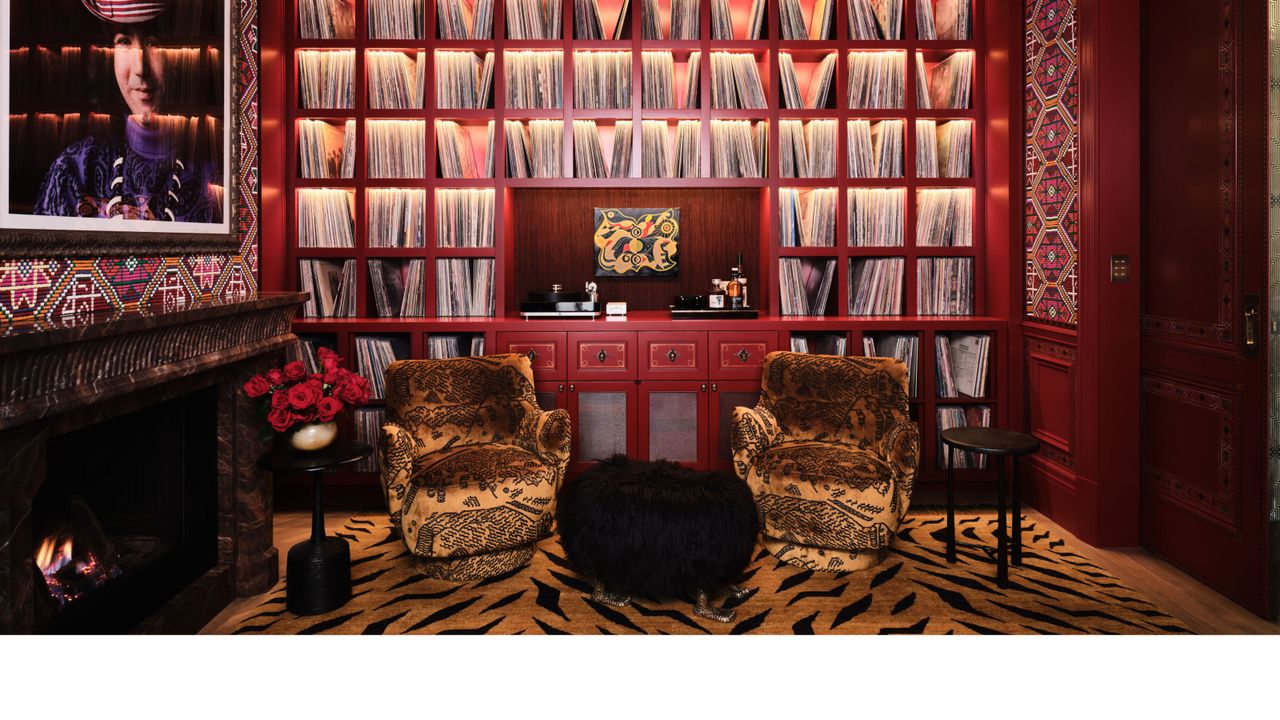

Leopard print has been so ubiquitous for so long, we’ve stopped noticing it. It’s sprawled across too many high-end restaurant carpets, draped over every influencer in a vintage coat, and, for some, has edged too close to cliché. Fawn had its moment, but didn't quite stick. Too subtle, too demure — too nice.
Tiger, on the other hand, is anything but. It’s decorating with animal print with real bite, a bold, swaggering force for 2025 that makes leopard look somewhat tame.
“Tiger print brings a boldness that feels fresh and a little more rebellious,” says interior designer Annie Downing “It has a strong sense of movement, a graphic punch, and a certain regality that demands attention.” This is why, from grand European estates to cult-favorite boutique hotels, motifs, such as Scalamandré’s now-iconic tiger print, have become a designer go-to.
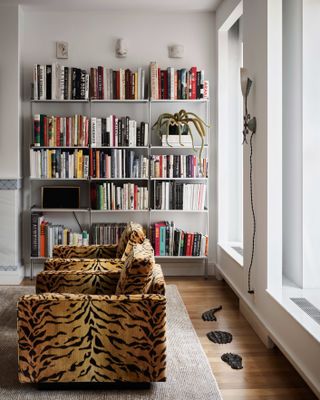
Tiger print's warmth anchors a space, creating a counterpoint to eclectic elements — like the riot of colorful book spines stacked on this living room shelf.
And yet, despite prowling on the current scene, tiger print is nothing new. Its history stretches from 17th-century French textiles to antique Persian carpets, not to mention every self-respecting rockstar’s 1970s sunken lounge. “Leopard has decades — if not centuries — of credibility, but tiger print isn’t exactly new either,” says Annie. "While it might feel like a ‘moment’ right now, it’s hardly a passing trend.”
What has changed is how we’re using it. The new take on tiger print is still high-impact, though quite a bit more naunced. Designers like Studio Shamshiri and Christopher Farr have reimagined it as something abstract, morphing stripes into graphic, lightning-bolt-like patterns that suggest movement without being too on the nose.
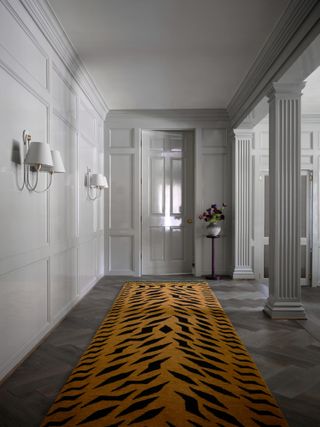
A little goes a long way. One well-placed tiger print piece can electrify a space, adding movement, depth, and a healthy dose of attitude.
As with all bold patterns, the key is balance. Annie suggests offsetting the energetic pattern with equally powerful players — rich colors or luxurious textures like mohair, velvet, and aged leather. She's a proponent of starting small — an accent chair, an ottoman, even a well-placed pillow can make an impact. That said, she’s not opposed to a full-scale tiger-print wallpaper moment either.
It's glamour with a touch of danger. An instant statement. And, crucially, it’s offers something that feels *actually* different. Tiger print's got claws — a track record of proven longevity — but likely wasn’t in your grandmother’s house, either — which only makes it all the more interesting.
Be The First To Know
The Livingetc newsletters are your inside source for what’s shaping interiors now - and what’s next. Discover trend forecasts, smart style ideas, and curated shopping inspiration that brings design to life. Subscribe today and stay ahead of the curve.
Ahead, six ways to walk on the wild side.
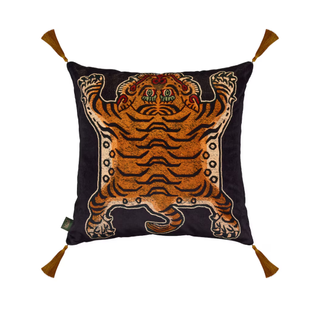
This trend has a playful edge — because, no, you haven’t actually skinned a tiger. But this pillow from the ever-whimsical House of Hackney leans into the fun with a vintage-inspired Tibetan tiger motif, sprawling across plush velvet and finished with just the right flourish: tasseled trim.
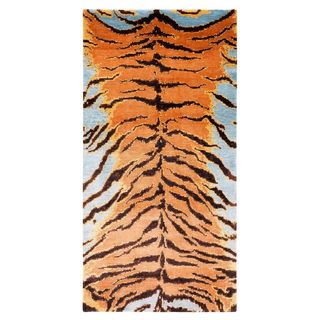
We’re completely smitten with this luminous silk patterned rug by Joseph Carini. The icy blue base against its bold orange tiger stripes is unexpected — almost surreal — and impossibly chic. A signature in Joseph's collection for years, it’s a welcome departure from traditional tiger prints and ready to make a statement in yours.
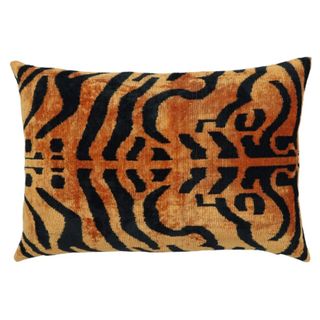
Livingetc.com editor Hugh Metcalf swears that the chicest way to do animal print is to sidestep anything too literal. This cushion is an interesting take on the idea of tiger, combining the classic animal color palette with a less literal pattern.
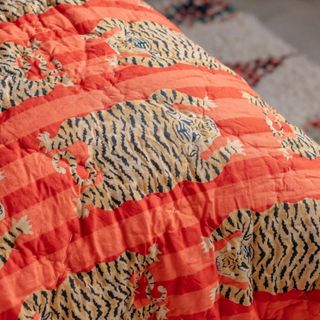
This classic splayed tiger motif is given a cool, illustrative feel on this double-sided throw from Graham & Green. It introduces a brighter, more vibrant color palette alongside the animal print that takes the idea in a completely different direction.
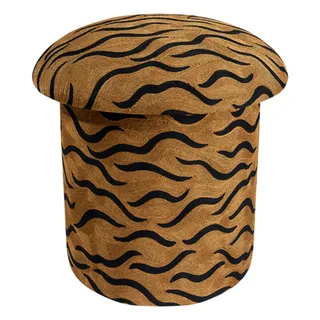
This abstracted take on tiger print is an easy layering piece. Vanity? Desk? Wherever you place this striking stool, it adds instant interest — especially with its sculptural, mushroom-like silhouette. Handmade by artisans in India, it pairs best with warm, tactile materials like leather and velvet in shades of brown and burnt orange.
Given the sheer volume of animal prints making their way into interiors, we had to ask: animal prints on animal prints — yes or no? Tiger print on zebra print?
“For me, it’s a no,” admits Annie. “I love a bold moment, but mixing multiple animal prints feels overwhelming — too much.”
That said, if you must mix, she has one rule: “Keep one print dominant and let the other be an accent in a more subtle, small-scale application. Otherwise, I say let the tiger (or leopard) have its moment without competition.” Duly noted.

Formerly covering fashion at L’Officiel USA, style maven Julia Demer brings her love of design to Livingetc’s world of interiors. As the title’s New York-based Style Editor, Julia's work reflects a sharp eye for detail and an innate passion for aesthetics. Her journey began with a strong foundation in design, honing her craft at renowned establishments like The Row and even establishing her own eponymous fashion brand. Julia’s design background is evident in the way she thoughtfully curates shopping edits, always maintaining a focus on emerging trends while preserving timeless sensibilities. For Julia, fashion and interiors go hand in hand, reflecting her lifelong commitment to perfecting the art of style.
-
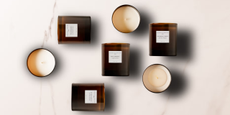 My Favorite New Home Fragrance Discovery? These Candles Are Made by Expert Perfumers With Access to Extraordinary Ingredients
My Favorite New Home Fragrance Discovery? These Candles Are Made by Expert Perfumers With Access to Extraordinary IngredientsFragrance making is an art, and Essential Parfums honors that
By Devin Toolen Published
-
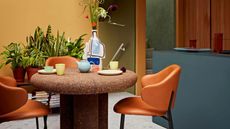 Cork Is the Cool, Sustainable, and Surprisingly Chic Material We Can't Stop Furnishing With Right Now
Cork Is the Cool, Sustainable, and Surprisingly Chic Material We Can't Stop Furnishing With Right NowIn honor of Earth Month, we’re toasting to cork... furniture, that is
By Julia Demer Published
-
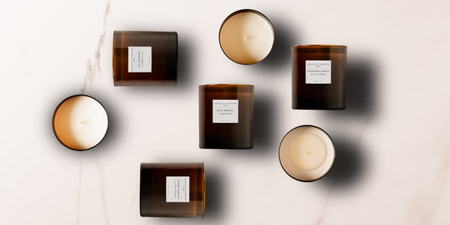 My Favorite New Home Fragrance Discovery? These Candles Are Made by Expert Perfumers With Access to Extraordinary Ingredients
My Favorite New Home Fragrance Discovery? These Candles Are Made by Expert Perfumers With Access to Extraordinary IngredientsFragrance making is an art, and Essential Parfums honors that
By Devin Toolen Published
-
 Forget Tomato Girl Summer — This Season, We're in for an 'Olive Girl Spring'
Forget Tomato Girl Summer — This Season, We're in for an 'Olive Girl Spring'From olive-shaped candles to olive-embroidered placemats, all the chicest tables are donning martini olive decor
By Olivia Wolfe Published
-
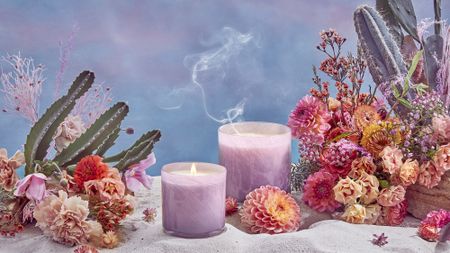 Farewell, Floral Fragrances — Meet the Unexpected Desert Plant That’s Scenting Our Homes for Spring 2025
Farewell, Floral Fragrances — Meet the Unexpected Desert Plant That’s Scenting Our Homes for Spring 2025A seasonal home scent that *is* actually groundbreaking
By Julia Demer Published
-
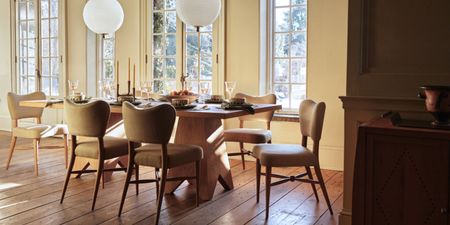 Leonardo DiCaprio's Design Team Just Dropped a Charming Retro-Inspired Homewares Collab with West Elm
Leonardo DiCaprio's Design Team Just Dropped a Charming Retro-Inspired Homewares Collab with West ElmFrom bold patterns to alluring textures and vintage-inspired silhouettes, this collection is nostalgia, stylized
By Devin Toolen Published
-
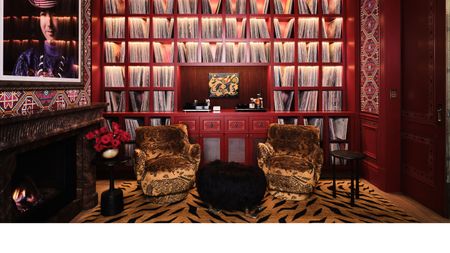 Leopard Spots Are Over — Here's Why Tiger Print Is the Next Big Trend in Design
Leopard Spots Are Over — Here's Why Tiger Print Is the Next Big Trend in DesignThe coolest cat in home design is here, and it’s got claws
By Julia Demer Published
-
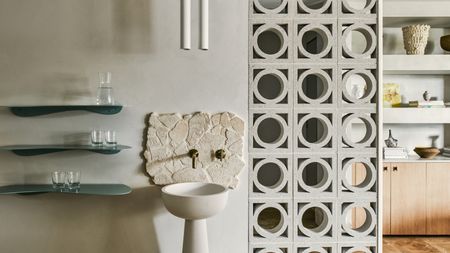 Before You Splurge on Expensive Built-Ins, Consider This Designer-Loved Mini Shelf Trend That "Elevates the Ordinary"
Before You Splurge on Expensive Built-Ins, Consider This Designer-Loved Mini Shelf Trend That "Elevates the Ordinary"Be it a bedside, bathroom, or bar these mini shelves offer a stylish solution for any area that needs a little extra room for all your favorite things
By Olivia Wolfe Published
-
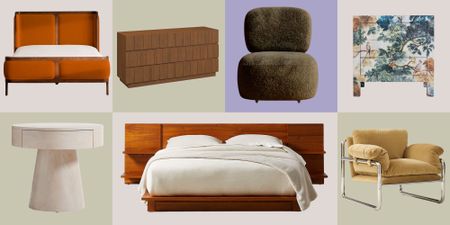 Design, But Make It Dreamy — This Is the Best Bedroom Furniture to Know in 2025
Design, But Make It Dreamy — This Is the Best Bedroom Furniture to Know in 2025Sleep is sacred. So is style. These 2025-approved pieces ensure your bedroom delivers both
By Julia Demer Published
-
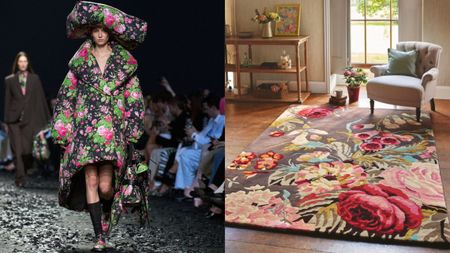 Moschino’s FW25 Runway Went Heavy on the Whimsy — But Its Biggest Statement Came From a 165-Year-Old Interiors Brand
Moschino’s FW25 Runway Went Heavy on the Whimsy — But Its Biggest Statement Came From a 165-Year-Old Interiors BrandItalian fashion house, Moschino, tapped Sanderson’s iconic floral archive for its latest show in Milan
By Julia Demer Published
